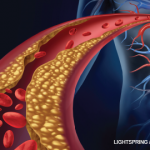Communication also extends to geriatric patients. Dr. Singh says clear instructions and trust between patient and rheumatologist are key. One of his patients developed fatigue, called his primary care provider, and due to some memory problems, did not indicate he was taking methotrexate. The patient was referred to cardiology and underwent a cardiac catheterization procedure.
“Talking to the rheumatologist could prevent a lot of harm to the patient. Fatigue could be a side effect of any medication,” Dr. Singh says. “Proper communication between the rheumatologist and the geriatrician or primary care [provider] can avoid unnecessary interventions, improve patient safety and reduce the cost of care. Sometimes, we forget to take a step back, look at the patient as a whole and think about what else could be wrong.”
Dr. Bauer, who is co-founder of the Young Rheumatologists Association, says it is always exciting to work with primary care providers and geriatricians who know their patients well.
“They are on the lookout for complications from medications, and the patient really trusts them,” she says, adding that rheumatologists should build on those relationships. “Patients don’t always understand what rheumatology really is and very often show up very scared and confused.”
Dr. Singh agrees and considers his partnerships with geriatricians essential.
“Rheumatologists are team players. We need to talk to primary care, geriatrics and the specialists,” he says. “We need to work in combination with the care team to improve patient care.”
Richard Quinn is a freelance writer in New Jersey.
References
- Staff. American generation fast facts. CNN. 2016 Oct 20.
- Hochberg M, Altman R, April KT, et al. American College of Rheumatology 2012 recommendations for the use of nonpharmacologic and pharmacologic therapies in osteoarthritis of the hand, hip, and knee. Arthritis Care Res (Hoboken). 2012 Apr;64(4):465–474. DOI 10.1002/acr.21596.
- Rahme E, Bernatsky S. NSAIDs and risk of lower gastrointestinal bleeding. Lancet. 2010 Jun 10;376(9736):146–148.

